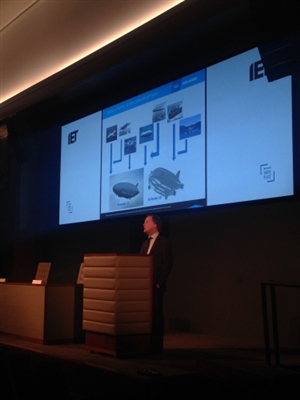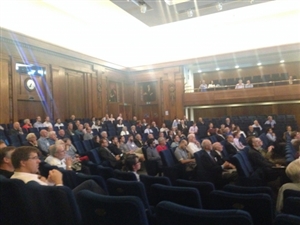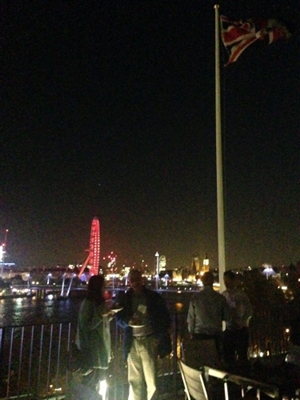IET Central London Evening Lecture, Savoy Place, 21-Sep-2016
Joint event with The Royal Aeronautical Society
Presented by: Andy Barton, Hybrid Air Vehicles
Can we now forget the aeroplane, and embrace the re-birth of the airship?
From what we heard from Andy, the answer is "yes", at least for some applications.
Whilst not cheaper than sea, rail or road freight (on a cost/load basis), it could well be the answer where such infrastructure does not exist or is impractical.
The modern solution is quite different from what we knew from the 20th century, widely used in WW2. Then, they were rigid and filled with hydrogen, suffering from well-documented drawbacks and disasters. The current generation has learnt from the past. Barnes Wallis, who designed the successful R100, gave the founder of HAV several bits of advice (typically, scrawled on the back of a beer mat) all of which they have embraced, plus some extra innovations.
The Airlander isn't rigid; rather, it has a pressure-stabilised, flexible, multi-hull shape (for improved lift), using high-tensile fabric composite and filled with helium. Don't worry about it getting punctured - it results in a slow leak, with the main problem being locating it. The altitude is limited to around 20000 feet by the air pressure; to maintain equilibrium, it cleverly adjusts the air/helium mix. Trimming is by 4 air ballonnets.
Unlike traditional airships, it is set up to be heavier than air when on the ground, so it takes off and lands under power. An advantage is that it is more stable when loading and unloading.
The drive is provided by four vectored thrust engines, although it can fly on one (which is good to know). These allow for a cruise speed of 80 knots.
All the control is via fibre optics, which provides immunity from interference.
Some of the key benefits were identified as:
Long range, long endurance
Needs little infrastructure - no special surface required to land/take off
Good for disaster relief
Can carry outsize loads
Low fuel burn - fossil fuel to maintain the 20 knot air speed; none needed for the lift
Can operate in all weather conditions; Can take off in 35 knots winds; Safety anchors at up to 80 knots.
Very quiet and stable (great for sightseeing and not spilling the drinks!)
So far, after a cancelled project for the US Army (political reasons), there has been a successful first flight with a light load. The second flight had a hard landing, that gained some unfortunate publicity, and is still under formal investigation; this unscheduled crash proved its safety! Only minor mechanical repair was needed.
In the pipeline are the Airlander 10 (more for surveillance and tourism than for freight) and the Airlander 50 (for freight; payload, crew and 48 passengers; up to 6 containers).
In the future, they want to reduce the fossil fuel use; maybe electric motors with batteries; solar panels would be even better to reduce battery weight (But would need to be flexible; possibly as part of the fabric).
So, it could well be up, up and away for the Airlander project!
I went away humming that annoying song by Fifth Dimension… 'Would you like to ride in my beautiful balloon…'
#PrepareForTakeoff
https://www.hybridairvehicles.com/

